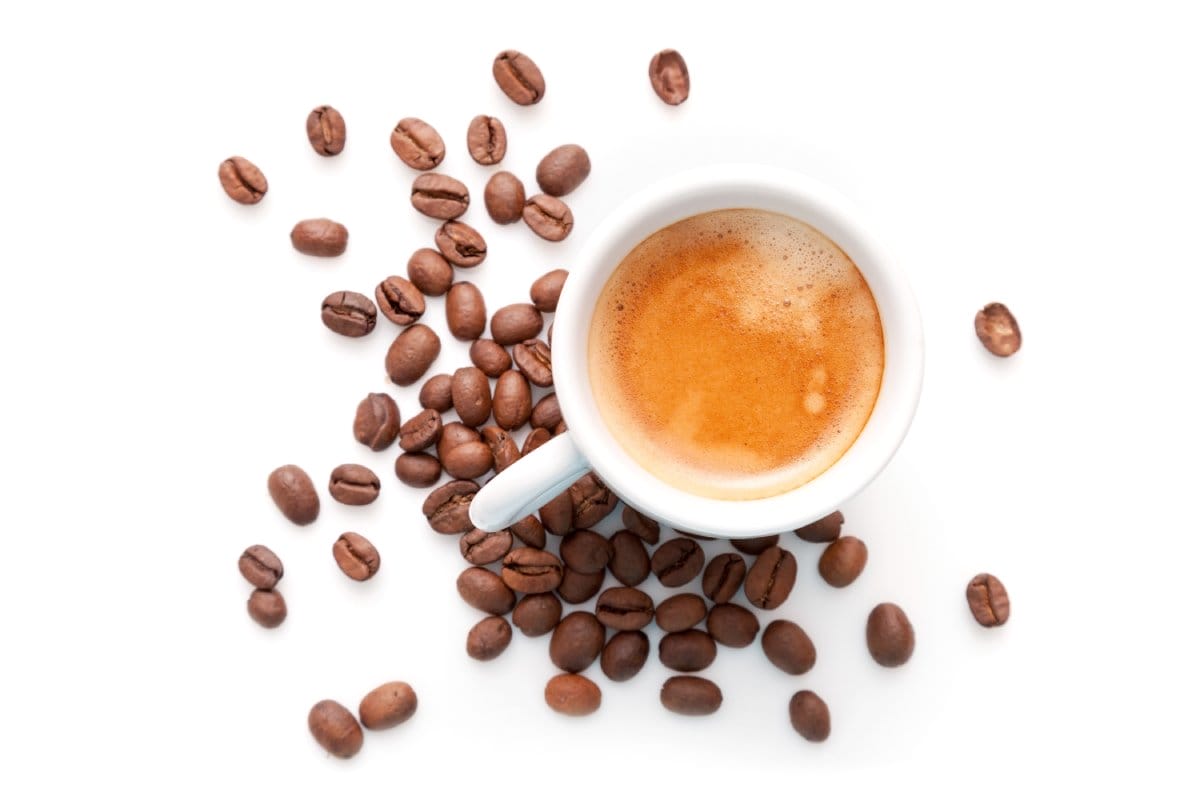Three out of four Americans drink coffee every day. 51% of people purchase coffee from a coffee shop at least once a week. Yet more people order espresso shot-flavored lattes (38%) when ordering at a coffee shop than either filter coffee (31%) or cold brew/drip coffee (30%). That’s according to a 2023 Drive Research survey.
So, what is the difference between the espresso you’re drinking in your favorite latte versus the coffee you’re brewing at home?
That question ultimately comes down to the difference between coffee and espresso on a foundational level. So let’s explore how these two caffeinated beverages differ from a variety of angles.
Espresso vs Coffee: Beans
Let’s start with the basics. Foundationally, there is no discernable difference between coffee beans vs. espresso beans. In fact, as Serious Eats notes,
“Espresso and coffee are not different things. Espresso is a type of coffee. More specifically, it’s a method of brewing coffee that uses high water pressure and finely ground beans to make a small, concentrated shot (the term also refers to the shot itself). While darkly roasted beans have historically been more popular in Italy, where espresso was invented, any kind of coffee bean from any origin and at any roast level can be used to make espresso.”
Whether brewing coffee or espresso, raw green coffee beans must first be processed and dried, then roasted to the desired level. There are a variety of roasting levels, but some of the most common for espresso include:
- Espresso roast
- Dark roast
- Italian Roast
- French Roast
By contrast, coffee is more commonly brewed across the entirety of the roasting spectrum, ranging from Cinnamon and Light on one end to Medium/House in the middle (most common) to French/Espresso/Italian roast on the other end.
Espresso vs Coffee: Grind
If you’ve ever ground your own whole-bean coffee, you’ll know that the size of the grind impacts how easily and quickly water filters through. This is important when brewing different types of coffee-based drinks.
- When making cold brew coffee, for instance, a coarser grind is often preferred.
- On the other end of the spectrum, when making espresso, finely ground coffee is required to ensure that water passes through slowly enough when pressurized to give the resulting drink its characteristic flavor, concentration, and color.
Espresso vs Coffee: Machine Brewing vs. Other Methods
Coffee can be made via a variety of methods and with a variety of machines and devices:
- Filter / pour-over
- Drip
- Cold brew
- French press
On the other hand, espresso must be made using a dedicated espresso machine. That’s because for espresso to be espresso, it must be extracted very quickly with high levels of pressure and heat that only such a machine can create. Were you to use course grounds for espresso, water would filter through more quickly with less surface area to bind to, creating a watery end result.
Espresso vs Coffee: Caffeine
Caffeine levels per ounce are much higher in espresso than in coffee. According to the U.S. Department of Agriculture, 1 ounce of brewed coffee has 12 mg of caffeine. On the other hand, 1 ounce of brewed espresso has 63.6 mg of caffeine.
Given that espresso is normally consumed in 1-ounce “shots”, but coffee is typically consumed in servings of between 6-12 oz, it’s common for a cup of coffee to contain more caffeine than a similarly-sized espresso-based drink.
Espresso vs Coffee: Taste & Crema
Espresso and coffee can vary widely in their tasting notes based on the type of coffee bean used. That having been said, on a basic level, espresso has a more concentrated flavor and a “creamier” texture thanks to the inclusion of emulsified fats on top, otherwise known as crema.
Try Ellianos Coffee or Espresso Today
Ready for a piping hot cup of coffee or a bold and intense cup of espresso? Visit an Ellianos near you today!


